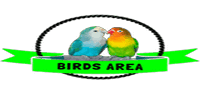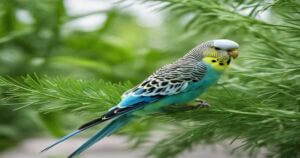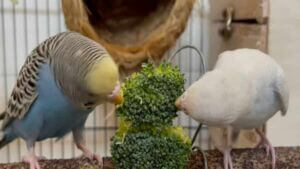Can Parrots Safely Eat Jelly? Don’t Risk Their Health
Hey, did you ever wonder if our feathered friends, parrots, can eat some jelly? Well, guess what? They can. But, hold on, it’s only cool as an occasional treat. Jelly’s packed with sugar, and we don’t want our parrot pals to have too much of it. They love it, sure, as a fun snack, but it’s not what they should eat all the time.
Parrots usually dig fruits, veggies, and seeds – that’s their main meal deal. When we have these bright birds as pets, we’ve got to keep a close eye on what they eat.
We want them healthy and happy, right? So, let’s talk about why jelly might be okay sometimes, what to watch out for, and other fun treats we can give them. These smart, colorful birds deserve the best.
Can Parrots Eat Jelly?

Parrots, with their eclectic and omnivorous diet, often raise the question: can they eat jelly? The answer is a bit nuanced, so let’s delve deeper.
Variety Matters: Types of Jelly for Parrots
When we talk about jelly, it’s not just one kind. There’s fruit jelly, gelatin-based jelly, and even savory jellies like aspic. For our feathered friends, natural fruit jelly is the best choice.
However, this means no added sugar or artificial flavors. Opting for jellies made from organic fruits can be a safer bet.
The Risks: When Jelly is Not So Jolly
Jelly might seem like a harmless treat, but it’s a bit of a double-edged sword. High sugar content and artificial additives in some jellies can be bad news for parrots. These can lead to obesity and digestive problems. Also, remember, gelatin-based jellies might be tough for them to digest.
Jelly in a Parrot’s Diet: How Much is Too Much?
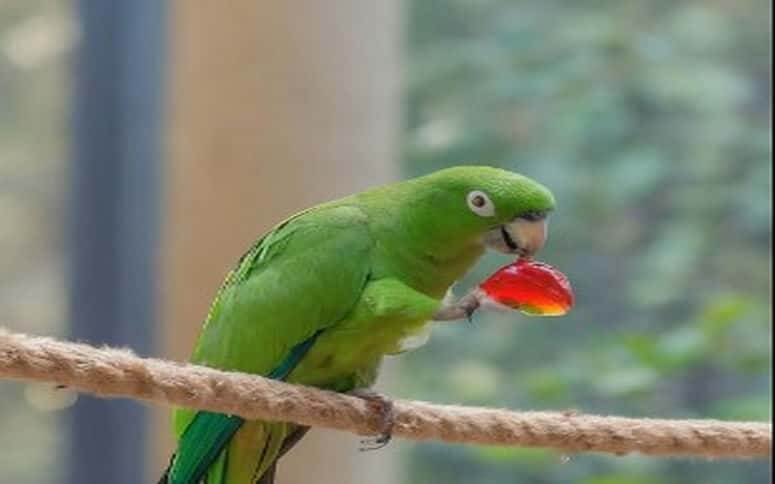
Now, this is crucial. If you decide to give your parrot jelly, think small. A teaspoon of natural fruit jelly as an occasional treat (no more than once a week) is enough. It should never replace their main diet of fruits, vegetables, and seeds.
Jelly’s Nutritional Aspect: A Little Goes a Long Way
Jelly offers hydration and a bit of sugar, but it’s not nutrient-rich. It lacks essential vitamins and minerals. So, it should only be a tiny part of your parrot’s diet.
Digestive Concerns: Sweet but Troublesome
Parrots’ digestive systems are delicate. Too much jelly, with its high sugar, can upset the balance of bacteria in the gut, leading to diarrhea or an upset stomach. Plus, the lack of fiber in jelly is another downside.
So, can parrots eat jelly? Yeah, a little bit, as a treat. But it’s all about balance and choosing the right type. Keep your parrot’s meals colorful and varied, just like their personality.
Feeding Parrots Right: Healthy Alternatives to Jelly
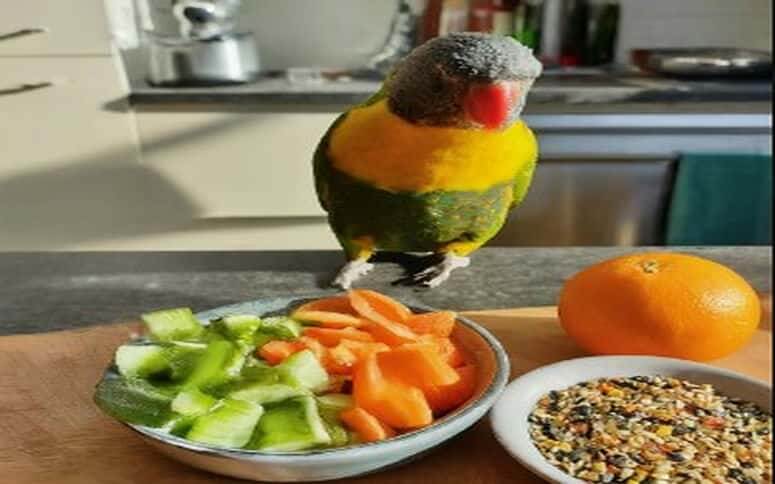
Ditching jelly for your parrot is a wise choice due to its high sugar and artificial additives. But fret not. There’s a variety of nutritious and delightful alternatives that will keep your feathered friend both healthy and happy.
Let’s explore these options, complete with recommended amounts and examples:
Fresh Fruits and Vegetables: A Parrot’s Natural Choice

Parrots thrive on a diet that includes a mix of fruits and vegetables. These provide essential nutrients and replicate their natural feeding habits. Here are some great choices:
- Apples: Offer a small slice or two (minus the seeds and core) as a sweet, crunchy treat.
- Berries: A tablespoon of mixed berries like strawberries, blueberries, and raspberries is perfect for a berry-loving parrot.
- Leafy Greens: A handful of spinach, kale, or collard greens can be a vitamin-packed snack.
- Carrots: Two or three thin slices or a whole baby carrot can be a great source of beta-carotene.
Start with small portions to ensure your parrot’s digestive system adapts well.
Parrot-Specific Treats: The Safer Indulgence
For those special moments, opt for treats specifically made for parrots. These are formulated to be both appealing and nutritionally sound. Some great options are:
- Seed Mixes: A small handful (about a tablespoon) of a high-quality seed mix can be both nourishing and entertaining.
- Nut Bars: Offer a small piece of a nut bar made from a blend of nuts and seeds. This provides essential fats and proteins.
- Dried Fruits: Give a couple of pieces of dried apricots or raisins for a natural sugar rush, but remember to keep this in moderation.
Always choose treats with no added sugars or preservatives to maintain your parrot’s health.
By incorporating these healthy alternatives into your parrot’s diet, you’re ensuring they get a balanced and diverse range of nutrients, keeping them vibrant and full of life. Happy and healthy feeding.
Tips for Feeding Jelly to Parrots: Keep It Sweet and Safe

Hey there, So, you want to know about feeding jelly to parrots? Great. Let’s make it simple and clear.
- Go for Natural Jelly: Choose natural fruit jelly. Avoid any with extra sugar or artificial stuff. A little bit of this jelly is fine. Think about a teaspoon size, but not more.
- Only as a Treat: Remember, jelly is just a treat. It’s not for every day. Maybe give it once a week or less. Your parrot’s main diet should be fruits, veggies, and seeds.
- Watch the Sugar: Too much sugar from jelly isn’t good for parrots. It can lead to health problems. So, keep it to a minimum.
- Mix It Up: Don’t just stick to jelly. Offer your parrot different treats. Try bits of fresh fruit or veggies. This keeps their diet fun and healthy.
- Keep an Eye Out: After giving jelly, watch your parrot. Make sure they’re okay and not having any bad reactions, like a tummy upset.
Note: If you’re not sure, ask a vet. They can give you the best advice on what’s good for your parrot.
So, that’s it. Simple and safe tips for giving jelly to your parrot. Keep it occasional, keep it small, and keep your feathered friend healthy and happy.
Homemade Jelly Recipes for Your Budgies
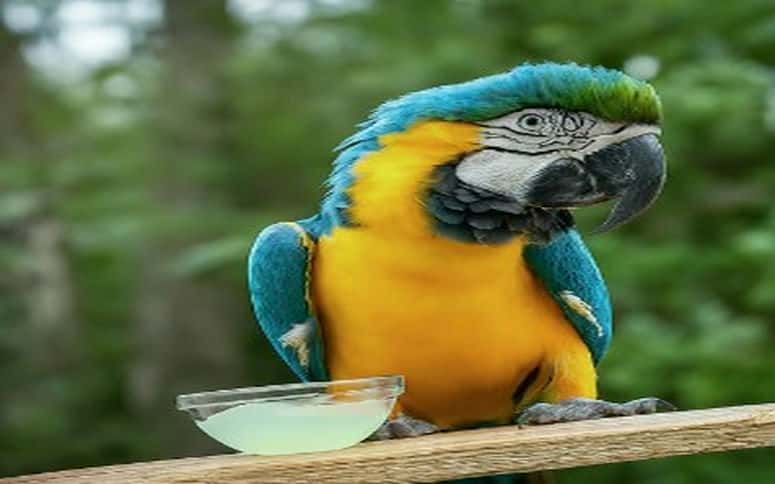
Want to make some homemade jelly for your budgies? It’s easy and fun. Here are a couple of recipes your feathered friends will love.
Simple Fruit Jelly
- Grab some fresh fruit. Berries, apples, or pears work great. You need about a cup.
- Chop the fruit into small pieces.
- Boil a cup of water and add the fruit. Let it simmer for about 10 minutes.
- Mash the fruit in the water.
- Mix in two teaspoons of gelatin. Stir it until it dissolves.
- Pour the mix into a small tray or moulds. Let it cool.
7. Once it’s set, cut it into budgie-sized pieces.
Veggie Delight Jelly
- Choose some veggies. Carrots or spinach are good. Get a cup of them.
- Chop them up and boil in a cup of water until they’re soft.
- Blend the veggies and water to make a puree.
- Add two teaspoons of gelatin to the hot puree. Stir well.
- Pour it into a tray or moulds to set.
- When it’s firm, cut into small pieces for your budgies.
Remember, these jellies are treats. Give them in small amounts. They shouldn’t replace your budgies’ regular meals. Enjoy making these. Your budgies will thank you.
Also read- Homemade Toys For Budgies
Frequently Asked Questions And Answers
Is Jelly Detrimental To A Parrot’s Health?
Yes, jelly can be detrimental to a parrot’s health due to its high sugar content and artificial additives. Regular consumption of jelly can lead to obesity, diabetes, and other health issues in parrots. So, It’s best to feed them jelly occasionally.
Can Parrots Eat Homemade Jelly Or Natural Fruit Gelatin?
While homemade jelly or natural fruit gelatin may contain less artificial additives, it is still not recommended to feed it to parrots due to the high sugar content. It is better to focus on providing them with a natural, balanced diet that supports their overall well-being.
What Types Of Jelly Are Safe For Parrots To Eat?
Natural, sugar-free jelly made from fruit juices is the best choice for parrots. Avoid giving them jelly that contains artificial sweeteners, preservatives, or additives as these can be harmful to their health.
How Should Jelly Be Served To Parrots?
Jelly can be served in small amounts as an occasional treat for parrots. It can be mixed with their regular food or served separately in small, bite-sized pieces. Ensure that the jelly is at room temperature and cut into manageable pieces to prevent choking hazards.
Sum Up
feeding jelly to parrots can be a fun and occasional treat, but it’s important to do it right. Opt for natural fruit jelly, give it in small amounts, and make it just a part of their varied diet.
Keep an eye on the sugar content to avoid health issues, and offer a mix of other healthy snacks like fresh fruits and vegetables. Always monitor your parrot for any unusual reactions and consult with a vet if you’re unsure.
By following these simple tips, you can enjoy giving your parrot this sweet treat while keeping them healthy and happy.
Thanks for reading. If you found this article helpful, feel free to share it with other parrot enthusiasts. Your feathered friends deserve the best care, and we’re here to help with practical, easy-to-follow advice. Stay tuned for more tips and tricks on keeping your parrot healthy and joyful.
Hello Dear, I'm Poli Kolymnia, owner of many birds (including budgies).
With a deep passion for these feathered companions, I'm here to share my expertise and extensive knowledge on birds care.
My articles cover essential topics like diet, housing, care, and health, providing practical tips to help you create a happy and thriving environment for your birds.
